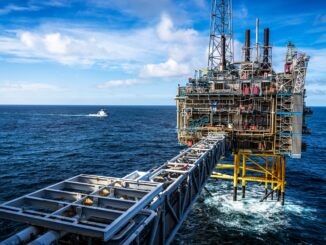
In a significant development for the global energy sector, Russian President Vladimir Putin has signed a decree that could pave the way for Exxon Mobil to reclaim its stake in the Sakhalin-1 oil and gas project, marking a potential thaw in U.S.-Russia energy relations amid ongoing geopolitical tensions.
This move comes three years after Exxon exited the project following Russia’s invasion of Ukraine, and it coincides with high-level talks between Putin and U.S. President Donald Trump at a summit in Alaska today.
Historical Context and Exxon’s Exit
The Sakhalin-1 project, located off the northeastern coast of Sakhalin Island in Russia’s Far East, is one of the largest oil and gas developments in the region. Exxon Mobil held a 30% operating stake in the consortium before its abrupt departure in 2022, citing force majeure due to Western sanctions imposed after Russia’s military actions in Ukraine. The exit resulted in a $4.6 billion impairment charge for the U.S. energy giant.
In response, Putin issued a decree in October 2022 that effectively seized control of the project, transferring operations to a new entity—a subsidiary of state-owned Rosneft called Sakhalinmorneftegaz-shelf.
Exxon’s withdrawal was unique among foreign partners; other stakeholders, including India’s ONGC Videsh (20% stake) and Japan’s SODECO (30% stake), were permitted to retain their interests.
Rosneft holds the remaining 20%. The unclaimed Exxon stake has been in limbo, with a December 2024 decree extending the sale period until 2026.
This latest decree builds on that framework, allowing the Russian government to decide on restoring foreign ownership rights under specific conditions.
Details of the New Decree
The decree, signed on August 15, 2025, outlines stringent requirements for foreign shareholders to regain their stakes. These include actively supporting the lifting of Western sanctions on the project, entering into contracts for foreign-manufactured equipment essential to operations, and transferring necessary funds to project accounts.
While the decree doesn’t explicitly name Exxon, it clearly targets former investors like the company, which has been locked in arbitration disputes with Russia over the asset seizure. Analysts note that the path back for Exxon remains fraught with challenges. U.S. and EU sanctions on Russian energy persist, and Sakhalin-1, though not directly targeted under U.S. designations, operates in a sanctioned environment. Exxon’s return would likely require exemptions or broader sanctions relief, which could be on the table in ongoing diplomatic discussions.
Production and Revenue Insights
The Sakhalin-1 project focuses on developing three fields—Chayvo, Odoptu, and Arkutun-Dagi—in the Okhotsk Sea, with estimated reserves of 2.3 billion barrels of oil and 485 billion cubic meters of natural gas.
Prior to Exxon’s exit, the project was a high-performer, producing approximately 220,000 barrels per day (bpd) of oil in 2021.
However, the force majeure declaration led to a dramatic collapse in output, dropping to as low as 10,000 bpd in mid-2022.
Under the new Russian operator, production was fully restored by January 2023, returning to pre-crisis levels of around 220,000 bpd.
In 2024, output saw a 9.8% decline from 2023 levels, though exact figures for the prior year weren’t disclosed, suggesting a dip to roughly 198,000 bpd based on historical benchmarks.
Revenue data for Sakhalin-1 is less transparent under Russian management, but historical performance provides context. In 2018, the project yielded over 11.63 million tonnes of oil and condensate (equivalent to about 232,000 bpd) and 2.48 billion cubic meters of gas, generating billions in revenue at prevailing prices.
At current oil prices around $80 per barrel, annual gross revenue could exceed $5.8 billion for 200,000 bpd production, shared among stakeholders. For 2025, production is expected to stabilize, but maintenance shutdowns—such as one planned for August that could halt crude output temporarily—may impact figures.
Exxon’s potential return could boost efficiency and output, given its historical role as operator.
|
Year
|
Oil Production (bpd, approx.)
|
Key Notes
|
|---|---|---|
|
2018
|
232,000
|
Pre-sanctions peak; 11.63 million tonnes oil/condensate. |
|
2021
|
220,000
|
Exxon-operated.
|
|
2022
|
10,000 (post-exit low)
|
Force majeure impact. |
|
2023
|
220,000 (restored)
|
Under Rosneft subsidiary. |
|
2024
|
~198,000 (est.)
|
9.8% decline from 2023. |
|
2025
|
TBD
|
Potential maintenance halts; Exxon’s return could stabilize. |
Updates from Today’s Meetings
The decree’s timing aligns with a pivotal summit in Anchorage, Alaska, where Putin and Trump are discussing investment opportunities, Ukraine peace prospects, and potential economic incentives for Russia.
Trump has hinted at offering “economic incentives” to Putin, which could include energy sector deals like Sakhalin-1, amid considerations for sanctions relief.
Sources indicate the U.S. has even mulled using Russian icebreakers for Arctic gas development as part of broader talks.
While no direct confirmations on Sakhalin-1 emerged from the summit by press time, the discussions underscore a shift toward pragmatic energy diplomacy. Trump described Putin as unlikely to “mess around,” signaling optimism for deals that could benefit U.S. firms like Exxon.
On X (formerly Twitter), energy analysts and news outlets quickly highlighted the decree, with posts emphasizing its implications for oil markets.
Implications for the Energy Sector
If Exxon returns, it could signal a broader reopening of Russian energy assets to Western investment, potentially stabilizing global oil supplies amid volatile prices. However, hurdles like sanctions compliance and arbitration outcomes remain. For now, the decree represents a door ajar—whether Exxon walks through depends on the outcomes of today’s talks and future geopolitical maneuvers.
For the Trump adminstration, Energy Dominance includes energy and oilfield services as top priorities. This would also support the Russian depleted resources in the oil and gas sector that appear to be maxed out.
Energy News Beat Channel will continue monitoring developments from the Alaska summit and any Exxon responses. Stay tuned for updates.
Is Oil & Gas Right for Your Portfolio?
Crude Oil, LNG, Jet Fuel price quote
ENB Top News
ENB
Energy Dashboard
ENB Podcast
ENB Substack






